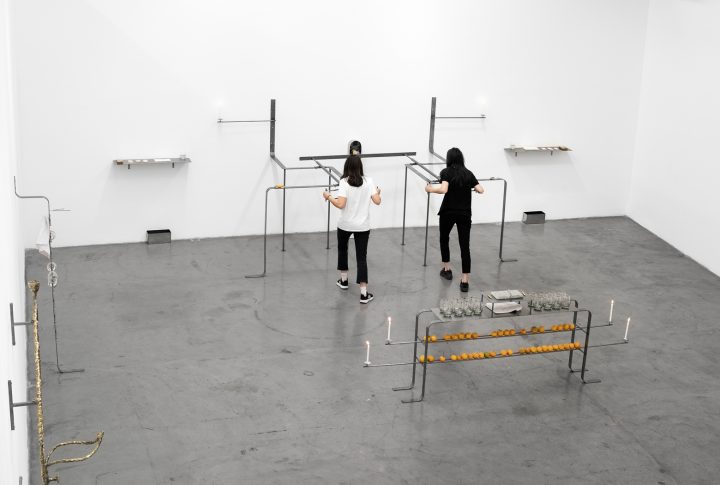




PROTOLITO / LIMEN brings together three groups of works by Sofía Durrieu, organized in the body of the room as if it were a temple.
The exhibition, accompanied by text by Patricio Orellana, will be displayed in Room 1 of the gallery and can be visited until July 15.
___
Protolito/Limen
By Patricio Orellana
From the title of the exhibition, Sofía Durrieu warns us that she is after something primary, primitive, previous, something prior to a form that, however ancient and perennial it may seem, cannot be the first. A body that still holds the promise of a metamorphosis, but leaves it in suspense, throwing it into the imagination: the protolith. She must also, I suspect, have been attracted by that false diminutive, which reappears in the names and descriptions of his pieces (“Paisajito”, “cuerpitos azulejados”) and gives this slightly nerdy and overwhelming concept an air of simplicity and everydayness, a scale within reach. The title is completed by another term: “Limen”, which stops at the “previous steps” at the entrance or exit to another space, which aims to turn an edge into a zone, a passage into a land-scape: a temple. And which also invites us to polish a rough surface until it becomes more peaceful and receptive. And to file it down.
The exhibition brings together works from different groups. But all of them are marked by an insistent gesture: the search to make sensitive processes (habits, postures, movements of energy) that we have automated. One example is the way in which Durrieu creates mechanical joints to connect phenomena that in principle occur at a distance, as if she was using the remaining instruments of “disciplinary societies” (that fascination with the delicacy and sadism of the tools of surgical medicine) to unknot the equally perverse mechanisms of “societies of control”. (The way in which these two forms of power still coexist became clearer with the enclosures associated to the pandemic). ) That is why Durrieu was able to see, in those giant photographs with holes where fr tourists to put their heads and have their photos taken, echoes of the brutal treatments and portraits of hysterical patients at La Salpêtrière in the 19th century.
But by “ becoming sensitive “ I don’t just mean making visible, as if pointing a torch at a pre-exist-ing body, with precise contours, waiting in the dark. To render sensitive is also to fabulate. Hence some of Durrieu’s pieces refer to characters and environments from the fantastic world: a chariot, a dragon, a lake, a swan. To become sensitive is to feel, touch and listen. “An instrument is also something that sounds”, notes Durrieu in his notes on the exhibition: the gesture of transforming an object into a tool leaves a remainder, a vibration that is left over and that is the echo of another possibility for that hand and that object. As Sofía reminds me, Atahualpa Yupanqui used to say about the axis of his cart: “if I like them to sound / why do I want to grease them?
In a letter to her friend Hélio Oiticica, Lygia Clark details that what interests her is “the phantasmatics of the body, and not the body itself”. The phrase – which fascinated Oiticica – does not say “representation” or “idea”, but phantasmática, a more dynamic term (like “phantom limb”, or the prosthetic perception of a supposedly absent part) that knots the representational, the sensorial and the affective, the material and the immaterial, in a poetic and even narrative way (the phantom as metaphor and as character). A “liminal” zone that comes as close as possible to the contact between the body as we feel it “from the inside” and the image we make of it “from the outside”. I suspect that this is what Durrieu is aiming at when she writes things like “identity-body-emotion-psy-che-spirit”. And in her wonderful works.
